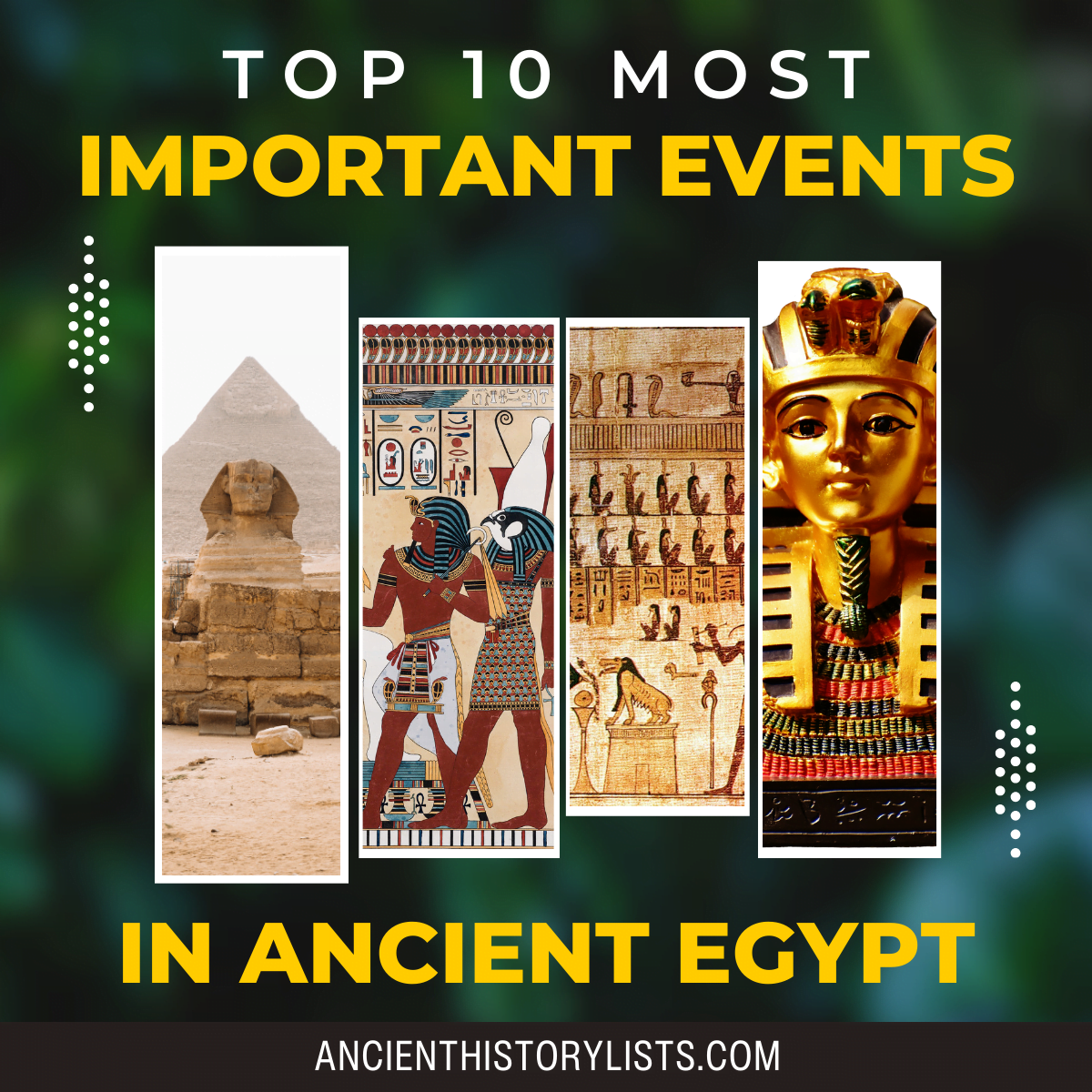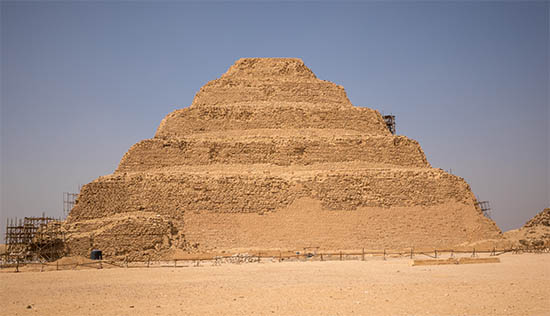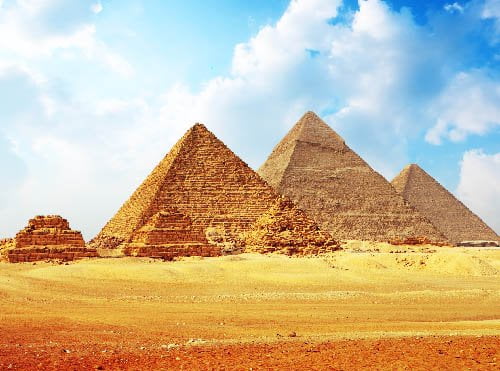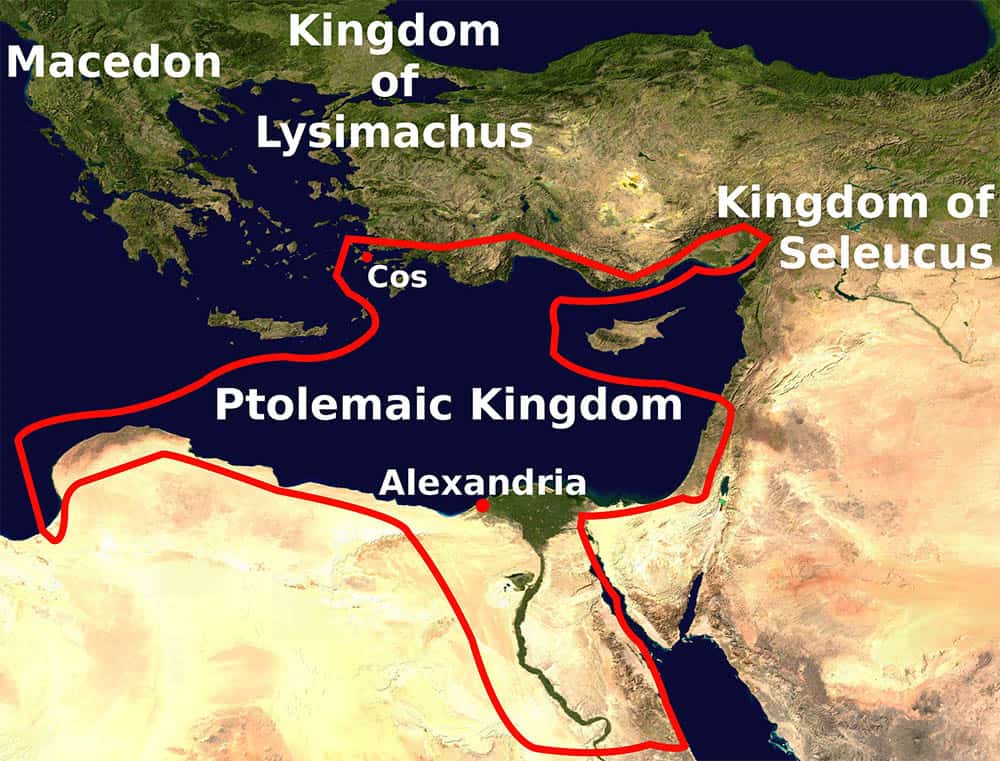The history of ancient Egypt dates back to 3100 BC when nomads arrived and created the first settlements in the northern region of the Nile valley. It is believed the civilization lasted for about 3,000 years during which several invasions took place.
These invasions resulted in a blend of cultures and traditions, one of the most famous being the victory of Alexander the Great in 332 BC. During his rule, he earned respect and love from the people due to his practice of religious and cultural tolerance. The Persians, on the other hand, were admired for their royal gardens, while the Nubians and Assyrians aimed to unite Upper and Lower Egypt.
The history of ancient Egypt is divided into several time periods, each defined by a ruling pharaoh. However, the sequencing of events remains uncertain and studies are still in progress.

In this article, we will try to provide an overview of the 10 most important events in ancient Egypt:
1. Prehistoric Egypt
Prehistoric Egypt refers to the era when the very first settlers made their homes along the Nile river. According to Egyptologists, the settlements started around 3100 BC which is referred to as the Early Dynastic Period. However, there are very few remains so researchers have been unable to determine its exact end. That is why the terms zero dynasty, dynasty 0, or the Protodynastic Period are used to describe the ending of this era.
It is believed that prehistoric Egypt was ruled by many pharaohs such as Narmer, Hor-Aha, and Menes and it was divided into cultural segments due to the presence of different Egyptian settlements. There is a lot of debate on this division as such settlements have also been discovered for the Predynastic Period, so the division should be subjective in order to facilitate gradual understanding of the era.
Over the years, archaeologists have found a lot of evidence in parts of Upper Egypt, but less in Lower Egypt which they blame on the heavy silt deposits found in and around the delta region. During flooding, the silt would get deposited in the region resulting in the burial of all delta sites.
2. Construction of the Step Pyramid at Saqqara

The word “Saqqara” in Arabic refers to an ancient burial ground for Egyptian pharaohs. The Step Pyramid was built for this very purpose and served as a tomb for the Pharaoh Djoser. It is the first of the Egyptian pyramid structures.
After the death of Djoser in the 27th century BC his high official Imhotep started and directed the construction of the Step Pyramid. The design consists of six steps or mastabas, layered on top of each other and decreasing in size. In other words, it resembles a staircase of pharaoh tombs leading towards the gates of heaven.
The pyramid was originally a square mastaba shape but was later changed to rectangular. The whole structure blends in with its surrounding perimeter wall. Archaeologists believe that the original design measured 62 meters with a base of 109 x 125 meters. After construction, it was covered in limestone.
The pyramid is surrounded by a thick wall which forms a spacious courtyard along with a carved entrance. On the south-eastern side, a huge hall was constructed where the remains of the pharaoh were buried. Some extra buildings were also made so that the pharaoh could roam in his afterlife. The entire complex is surrounded by a 40-meter trench which provided extra defense. Inside, the pathways form a series of mazes which help to defend against grave robbers. The Step Pyramid forms an essential part of Egyptian culture and is renowned for its exceptional design.
3. Construction of the Pyramids of Giza

The Great Pyramid of Giza and the two other smaller pyramids on the site serve as the burial tombs of Egyptian pharaohs namely Khufu, Khafre, and Menkaure. The Great Pyramid of Giza was also known as the Pyramid of Khufu and stands 481 feet (147 meters) tall.
Khufu began constructing the pyramid in 2550 BC and it is believed that a total of 2.3 million stone blocks were used to build the monument. The average weight of each stone brick was around 2.5 to 15 tonnes.
The second pyramid was built by Khufu’s son Khafre and construction began in 2520 BC. It is marked by a unique limestone feature called a sphinx with the back half resembling a lion and the front half, the pharaoh’s head. The Pyramid of Menkaure is the smallest of the three and serves more as a temple for mourning and prayer.
The Egyptians employed innovative construction techniques to build these larger-than-life complexes. All the workers were highly skilled and dedicated to the cause of their pharaoh.
4. Ending of the Old Kingdom
This was a significant moment in the history of ancient Egypt when politics and corruption led to the destruction of an entire empire.
The period from the third to the sixth dynasty is referred to as the Old Kingdom. At that time, Memphis was the royal capital and Pharaoh Unas ruled the kingdom. However, there was a sudden uprising of government in which the nomarchs, or officials, established autonomy over the central regions and gradually overthrew Unas.
The conflict between Pharaoh Unas and the nomarchs worsened the country’s economic conditions. Hunger and disease increased at an exponential rate resulting in the deaths of many innocent people. The conflicts could also be linked to the recurrence of bad harvests which contributed greatly to food shortages. Both reasons combined led to the eventual fall of the Old Kingdom.
5. The rise of the Middle Kingdom
The collapse of the Old Kingdom led to the death of many people and this decline in the population continued for another 200 years into the First Intermediate Period.
Egypt was a civil war zone where the Upper and Lower Egypt regions were split by fighting. However, around 2055 BC the civil crusades came to a halt and Upper Egypt emerged victorious, after which the regions reunited and Mentuhotep II began his reign as the new pharaoh of the 11th dynasty. The kingdom prospered until the 13th dynasty when the pharaohs were considered less superior to the nomarchs.
The nomarchs controlled the people and formed a powerful government which was backed by their wealth. However, towards the 12th dynasty their power started to decline, and this led to the fall of the Middle Kingdom.
6. Second Intermediate Period
As mentioned earlier, the history of ancient Egypt has been divided into time periods and the Second Intermediate was one which witnessed the influence of Asian culture. It describes the era after the Middle Age and before the New Kingdom.
During this era, Egypt was again divided and ruled by three parties, namely the Hyskos in the north, Egyptian control over Thebes, and the Nubians located in southern Egypt. Just like the First Intermediate Period, this era included wars, bloodshed, and massive corruption. However, several archeologists claim that the period was not as gruesome as has been described in Egyptian scriptures.
Thebes became the capital of Egypt where trade and immigration increased. This movement brought in several Semitic people who rose in wealth and power to influence the then Egyptian nation. The Egyptian people called them Hyskos, or rulers of foreign lands, who brought destruction everywhere they went. The Hyskos created many conflicts. They ransacked temples, oppressed the weak, and molested women. But all of this came to an end when Ahmose of Thebes became the pharaoh and drove the Hyskos from all Egyptian land.
7. The rise of the New Kingdom
The reign of Ahmose of Thebes marked the beginning of the New Kingdom. It was an era of growth and prosperity when the people were wealthy and had access to all civic amenities. The 18th, 19th, and 20th dynasties formed part of the royal hierarchy. In fact, some of the most powerful Egyptian pharaohs including Ramses II, Akhenaten, Tutankhamun, and Thutmose III belong to these dynasties.
During this period the Egyptians explored and conquered many lands located in the southern Arabic region. Kush, Nubia, Lebanon, Syria, and Israel were all conquered in the quest for new resources and opportunities. This expansion also paved the way for trade. The gold mines of Nubia were used to import gold whilst the people would carve and create luxury items to make big money.
The pharaohs displayed much grandeur and built massive temples with their own wealth. Some of the most famous religious buildings include the Temple of Luxor, the Karnak temple complex, the Temple of Hatshepsut, and Abu Simbel.
Another archaeological wonder was the Valley of the Kings which served as the burial ground for all New Kingdom pharaohs. One of the most recent discoveries in the Valley of the Kings was the tomb of Tutankhamun. The structure was found intact and gold ornaments were discovered buried along with King Tutankhamun’s body.
The New Kingdom started to fall apart during the reign of Ramesses III. He fought many battles but the battle against the Sea People and tribesmen of Libya greatly weakened his economy. These continuous battles also resulted in a shortage of food, more famines, and fewer employment opportunities. Internal corruption also played an important part in weakening the economy. Ramesses III was the last ruler of this empire which gave birth to the Third Intermediate Period.
8. Third Intermediate Period
The Third Intermediate Period started around 1078 BC and marks the fall of the Egyptian pharaohs. Several forces can be blamed for their downfall but the most devastating was the invasion of foreign forces like the Assyrians and Libyans.
The priests located in the city of Thebes had slowly started to gain power and eventually ruled the southern part of the country. The division of power greatly impacted the economy and the people suffered from food and water shortages.
The Libyans attacked Egypt around 943 BC and this started the rule of the foreign monarchy. One of the most famous Libyan leaders, Shoshenq I, was responsible for reuniting the northern and southern parts of Egypt. This peace lasted for almost a century and the three successors of Shoshenq I lived a prosperous life. However, in 853 BC the Assyrians attacked Egypt and it was split into two regions: Shoshenk III ruled Lower Egypt whilst Takelot II and his allies ruled Middle and Upper Egypt.
In 700 BC the Assyrian forces secured an alliance with neighboring countries and conquered the entire Egyptian region. The Assyrians started ruling the land and called themselves Saite kings. Their reign continued for almost a century until Persian forces made their way into Egypt.
9. When Alexander conquered Egypt

Both the Persian and Nubian forces were successful in conquering Egypt and their reign lasted a couple of centuries. However, they were unaware of the growth of the Greeks and their leader Alexander the Great.
In 332 BC, Alexander conquered Egypt by defeating the Persians. The Egyptians liked him as a leader as he respected their religion and people. He was so charmed by their culture that he started to wear their traditional dress and study many of their scriptures.
Alexander conquered many regions and even named cities after himself. In Egypt, he did the same and made the city of Alexandria the new capital of Egypt. In fact, he utilized most of the Egyptian wealth to conquer the rest of the Persian Empire.
10. The Ptolemaic dynasty

The Ptolemaic dynasty was the last ruling hierarchy of Egypt. When Alexander the Great passed away, his general Ptolemy I succeeded the throne. This marked the beginning of the Ptolemaic dynasty which spanned three centuries.
The last ruler of the Ptolemaic dynasty was Queen Cleopatra VIII who committed suicide, marking the end of the Ptolemaic Kingdom, after which the Romans and Arabs ruled the country.
Such a great summary of Egyptian history. I love history; have read many historical fiction books re: Egypt. What a phenomenal country!
Thank you so much…I really appreciate these ancient history segments.